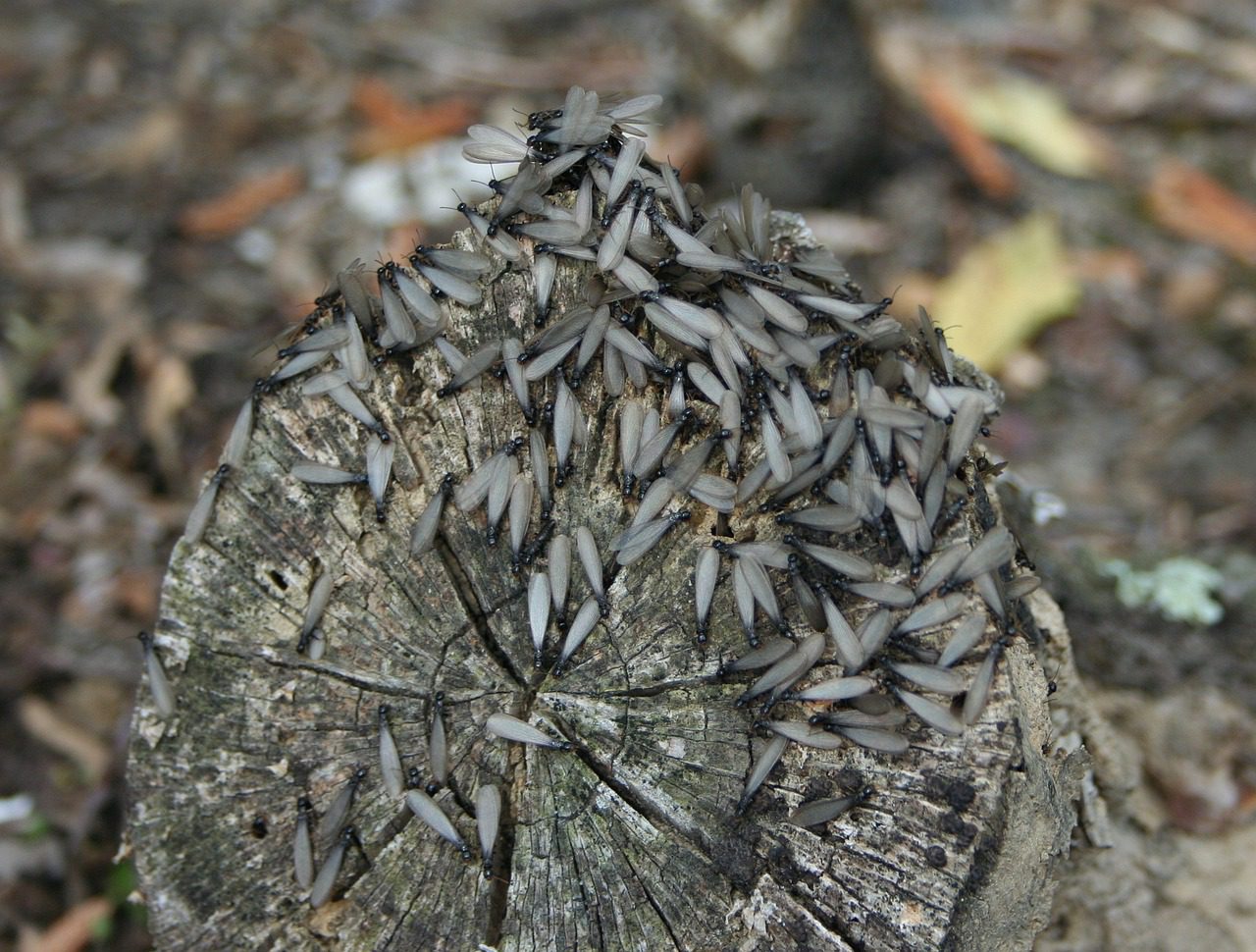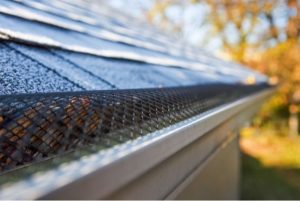A termite infestation is one of the homeowner’s worst nightmares. It compromises your home’s structural integrity and results in thousands of dollars in property damage. According to a National Pest Management Association (NPMA) study, termites cause over $5 billion yearly in home damage.
Contents
What are the signs of termite infestation?
An effective way to keep repair costs at a minimum is to catch the early signs of a termite infestation as soon as possible. In this article, we highlight the top eight early signs of termite infestation to watch out for to protect your home.

1. Swarmers
Seeing swarmers, also called reproductives or alates, is one of the most apparent signs of an active termite infestation. Alates are the young male and female termites that have left their nest searching for mates and a new location to build a colony.
They have two large, pale-colored pairs of wings, which are a quarter to half inches long. These flying termites fly in groups and are often attracted to light so you may notice them around windows and doors. Swarmers do not eat wood, bite, or sting; their primary purpose is to reproduce.
Once they mate, alates shed their wings and leave them behind window sills, among other entry points. Be sure to contact a termite and pest control company near you if you notice swarmers or discarded wings in your home for a termite inspection to keep your property safe.
2. Mud tubes
The most destructive termite species: the subterranean termites, build mud tubes, also called shelter tubes, to serve as bridges between food sources and their colonies. Since these termite species have soft bodies, the shelter tubes shield them against external elements such as predators and dry weather.
Mud tubes are made of termite droppings, wood, soil, and debris to provide moisture. They are often found near your home’s foundation and are easy to spot. Keep wood chips, firewood, and mulch away from your house and eliminate moisture-rich environments to keep subterranean termites at bay.

3. Stuck doors and windows
If your doors and windows feel stuck or you experience difficulties opening and closing them, it could indicate a termite infestation. Termites are often attracted to areas where wood is exposed, such as door frames and windows.
As the termites eat through the wood, it causes the door frames to warm or swell up as moisture seeps in through the gaps resulting in rot. This makes it difficult to open and close windows and doors.
Other structural problems caused by termites include sagging ceilings and floors or crumbling baseboards.
4. Noises inside your walls
Schedule a termite inspection with a reputable termite control company if you notice a quiet clicking sound inside your walls. Soldier termites are some of the most sensitive creatures and can identify noises and vibrations using organs found on the tibia and their antennae’s base.
In case of danger, soldier termites shake their bodies or bang their head against the wood to alert others. Worker termites, the termite species that love eating wood, are often noisy eaters. If you use a stethoscope or put your head closer to the area infested by termites, you will likely hear noises from worker termites.
5. Damage under wallpaper or paint
Termites often build exit holes ( small pin holes) and termite galleries (tunnels) under your wall surfaces as they feed on wood paneling and cardboard. However, this damage type is challenging to detect. It is because termites often feed on the wood paneling without disturbing the wallpaper surface or the thin coat of paint.
This explains why most people only discover a termite infestation and damage when renovating their property. That said, if you are keen, you could still identify telltale signs of termite damage.
Below are signs of termite infestation underneath paint and wallpaper:
- Bubbling or uneven paint
- Sunken or dented spots
- Discolored or peeling wallpaper
- Tiny pinholes
- Buckling wood
- Sunken winding lines
6. Power frequently short circuits
The warmth behind electrical fittings behind the walls often draws termites, so if there are frequent power short circuits, it could indicate their presence. An effective way to establish whether or not termites are the reason for the power surges is by inspecting power points and electrical fittings.
If you observe earthy materials like soil or damp mud building up, it could signal a termite problem. Do not opt for DIY termite control to fix impacted powerpoints, as this could be highly hazardous. Instead, seek professional pest control services to keep yourself and your home safe.
7. Blistering wood
Damaged wood can also signal termite activity. You will likely notice wood damage on potential termite entry points, including deck posts, structural supports, door frames, and porch spots. If you detect wood damage, inspect the affected area carefully for signs of mold and mildew.
Mold has a fuzzy or damp appearance, while mildew is powdery. If you spot mold or mildew, it indicates a wood rot issue. While wood rot does not imply a termite infestation, damp wood attracts pests such as termites, so you should fix the property to prevent termite damage.
Wood with tunnels or hollow-sounding wood is also a sign of termite infestation. You can tell a wood has a tunnel if it produces a hollow sound when you tap it.
8. Frass
If you spot frass, also known as termite droppings, it shows these critters are burrowing through and feeding on the wood on your property. Termites often build a tunnel that lets them get rid of feces off their nests.
You can notice tiny holes near an area where you have spotted termite droppings. Only termite dropping from dry termites is visible to human beings. It is pellet-shaped and has a wood color; most people mistake it for dirt, shavings, or sawdust. It also gives off a moldy smell.
Endnote
If you notice swarmers, mud tubes, noises inside the walls, blistering wood, frass, damage under paint or wallpaper, or your doors and windows get stuck, it indicates a termite infestation.
While you can eliminate termites from your home by yourself, DIY measures are messy and time-consuming. Hire a professional pest control provider to eliminate and prevent termite infestation.






